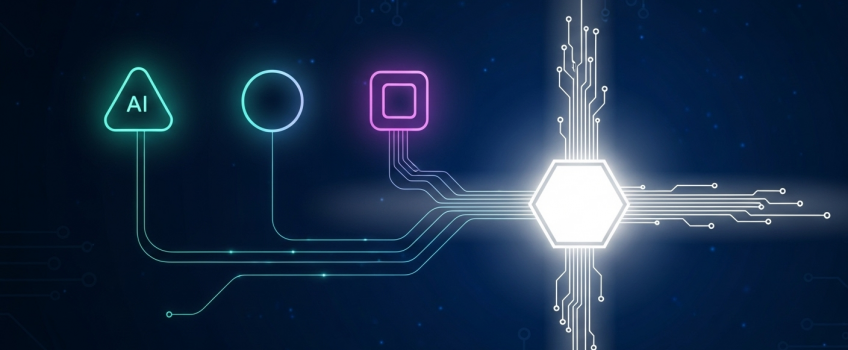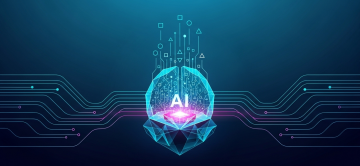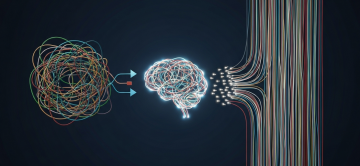AI Competitor Analysis: An Autonomous Agent Crew with CrewAI

The AI Analyst Crew: Architecting Autonomous Agents for Competitor Intelligence
This article provides the architectural blueprint for building such a system. We'll detail how to use a multi-agent framework like CrewAI to orchestrate specialized AI agents that can perform deep analysis in parallel and generate a coherent, data-driven strategic report. This is how we transform a complex manual task into a scalable, autonomous operation.
The Architecture: From Soloist to a Coordinated Crew
The core architectural shift is moving from a single, generalist LLM prompt to a team of specialized agents, each with a distinct role and goal. A single agent asked to analyze SEO and brand voice will perform both tasks poorly. A crew of specialists, however, can achieve expert-level results. Our system orchestrates these agents to ingest, analyze, synthesize, and report with maximum efficiency.
Diagram 1: The multi-agent workflow for automated competitor analysis.
Pillar 1: Defining the Specialist Agents
The foundation of a multi-agent system is the clear definition of each agent's role. Using CrewAI, we instantiate each agent with a specific `role`, `goal`, and `backstory`. This contextual framing focuses the LLM, enabling it to perform its task with much higher fidelity. The `tools` an agent has access to (e.g., web search, or in this case, the pre-scraped text) define its capabilities.
from crewai import Agent
from langchain_community.tools import DuckDuckGoSearchRun
# Tool for optional, live web searches if needed
search_tool = DuckDuckGoSearchRun()
# Define the SEO Specialist Agent
seo_specialist = Agent(
role='Senior SEO Analyst',
goal='Analyze the provided website content to identify its core SEO strategy, target keywords, and on-page optimization techniques.',
backstory=(
"You are a world-class SEO expert with a deep understanding of keyword density, "
"meta-tags, internal linking, and content structure. Your analysis is sharp, "
"data-driven, and focused on uncovering actionable insights."
),
tools=[search_tool],
verbose=True,
allow_delegation=False
)
# A similar agent would be defined for the 'Brand & Marketing Strategist'
Pillar 2: Orchestration and Task Management with CrewAI
Once the agents are defined, the `Crew` orchestrates their execution. We define specific `Tasks` for each agent. A key architectural decision here is choosing the process model. For analyzing a single website from multiple angles, running tasks in `parallel` is dramatically more efficient than a `sequential` process. The crew waits for all parallel analyses to complete before moving to the final synthesis step.
Expert Insight: Structured Outputs are the API Between Agents
For a crew to function reliably, the output of one agent must be a predictable input for another. Enforce structured outputs (like JSON) in your task descriptions and use Pydantic models for validation. This turns a conversational LLM into a reliable, programmatic component, preventing pipeline failures.
from crewai import Crew, Process, Task
# Assuming 'marketing_strategist' and 'senior_analyst' agents are also defined
# And 'website_content' is the scraped text
# Define tasks for the specialist agents
seo_task = Task(
description=f"Analyze this website content and provide a detailed SEO breakdown. Content: {website_content}",
expected_output="A JSON object detailing target keywords, meta description analysis, and H1/H2 tag structure.",
agent=seo_specialist
)
marketing_task = Task(
description=f"Analyze this same website content for its brand and marketing strategy. Content: {website_content}",
expected_output="A JSON object outlining the primary value proposition, target audience, and calls-to-action.",
agent=marketing_strategist
)
# Define the final synthesis task
synthesis_task = Task(
description="Synthesize the provided SEO and Marketing analyses into a cohesive executive summary.",
expected_output="A final strategic report in Markdown format, including a summary and comparison tables.",
agent=senior_analyst
)
# Assemble the crew with a parallel process for initial analysis
competitor_crew = Crew(
agents=[seo_specialist, marketing_strategist, senior_analyst],
tasks=[seo_task, marketing_task, synthesis_task],
process=Process.sequential, # Although tasks can be designed for parallel execution
verbose=2
)
# result = competitor_crew.kickoff()
Pillar 3: Automated, Professional Report Generation
The final output from the Senior Analyst Agent is not the end of the line. To deliver true business value, this structured data must be presented professionally. We programmatically pass the agent's Markdown output into a Jinja2 HTML template. This template structures the content with company branding and proper formatting. Finally, we use a library like WeasyPrint to convert the rendered HTML into a polished, client-ready PDF, completing the end-to-end automation.
Production-Ready Agentic Systems: A Checklist
Moving a crew from prototype to production requires robust engineering.
- Robust Web Ingestion: Production websites use anti-bot measures (like Cloudflare). A simple `requests` call will fail. Your ingestion layer must use more advanced tools like Selenium, Playwright, or a third-party scraping API to reliably fetch content.
- LLM Cost & Rate Limiting: Running agents in parallel multiplies your API calls. Implement robust logging and cost monitoring. Be aware of provider rate limits and build in retry logic with exponential backoff.
- State Management: For complex, multi-step analyses, if a task fails midway, the entire run is wasted. For production systems, integrate a state manager (like Redis) to save the output of each successful task, allowing the crew to resume from the point of failure.
- Task Decomposition is Key: The performance of the entire system hinges on breaking the problem down into the right set of agent roles. If a task is too broad, the agent will perform poorly. If it's too narrow, you create unnecessary complexity and cost. This decomposition is a critical architectural skill.
Conclusion: The Future of Strategy is Autonomous
By shifting from a monolithic prompt to a multi-agent crew, we engineer a system that is more than the sum of its parts. It is faster, more scalable, and less biased than any manual alternative. This architecture exemplifies the ActiveWizards approach: we apply deep expertise in both AI and systems engineering to build autonomous agents that solve concrete, high-value business problems and deliver a powerful competitive advantage.
Deploy Your Autonomous Analyst Crew
Ready to transform your strategic analysis from a manual chore to an on-demand capability? Our team specializes in designing and deploying sophisticated multi-agent systems using frameworks like CrewAI that deliver measurable business impact.



Comments (0)
Add a new comment: